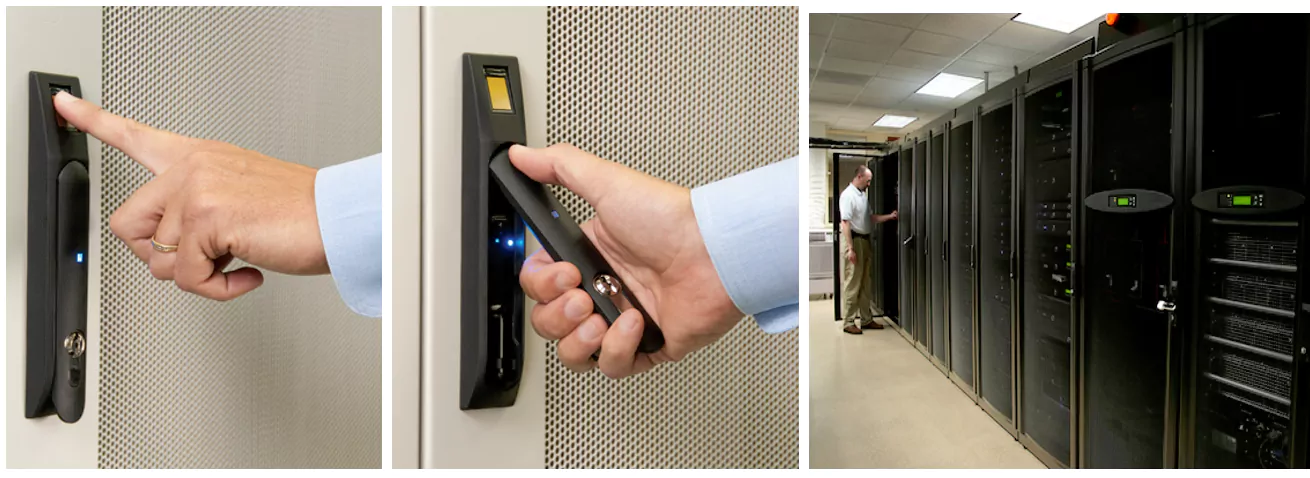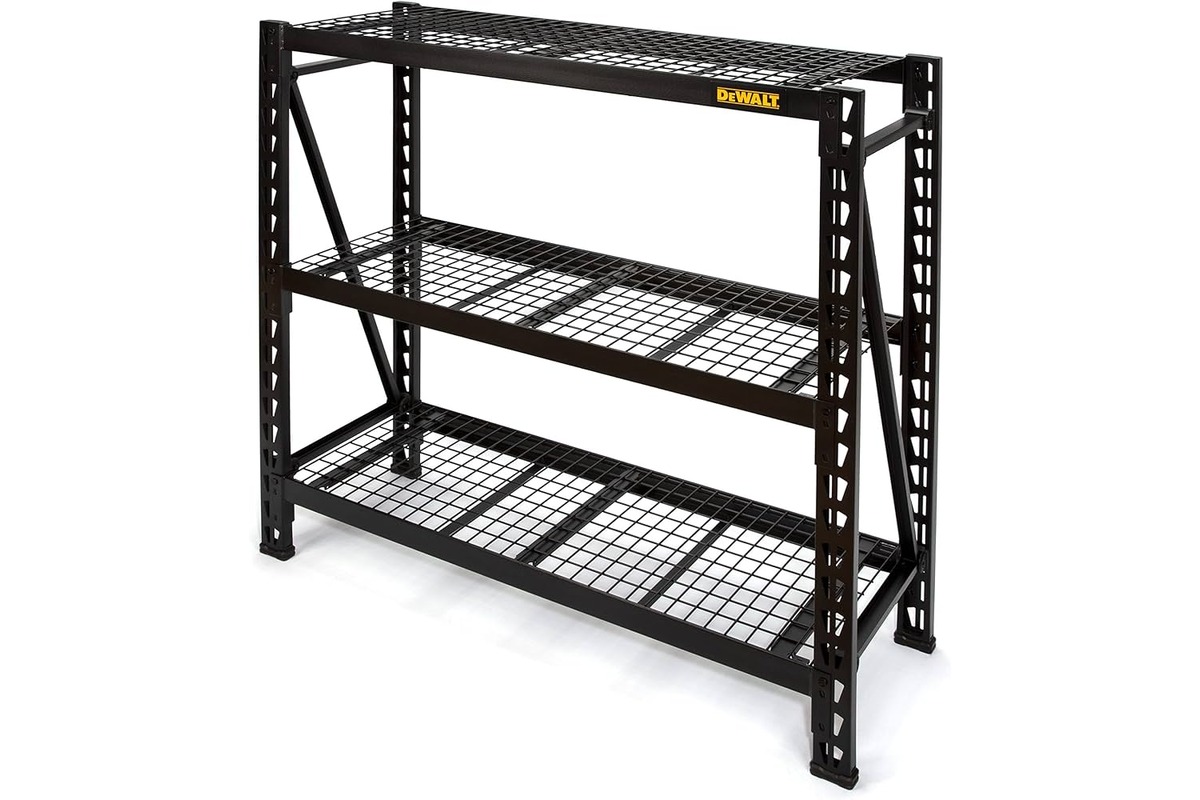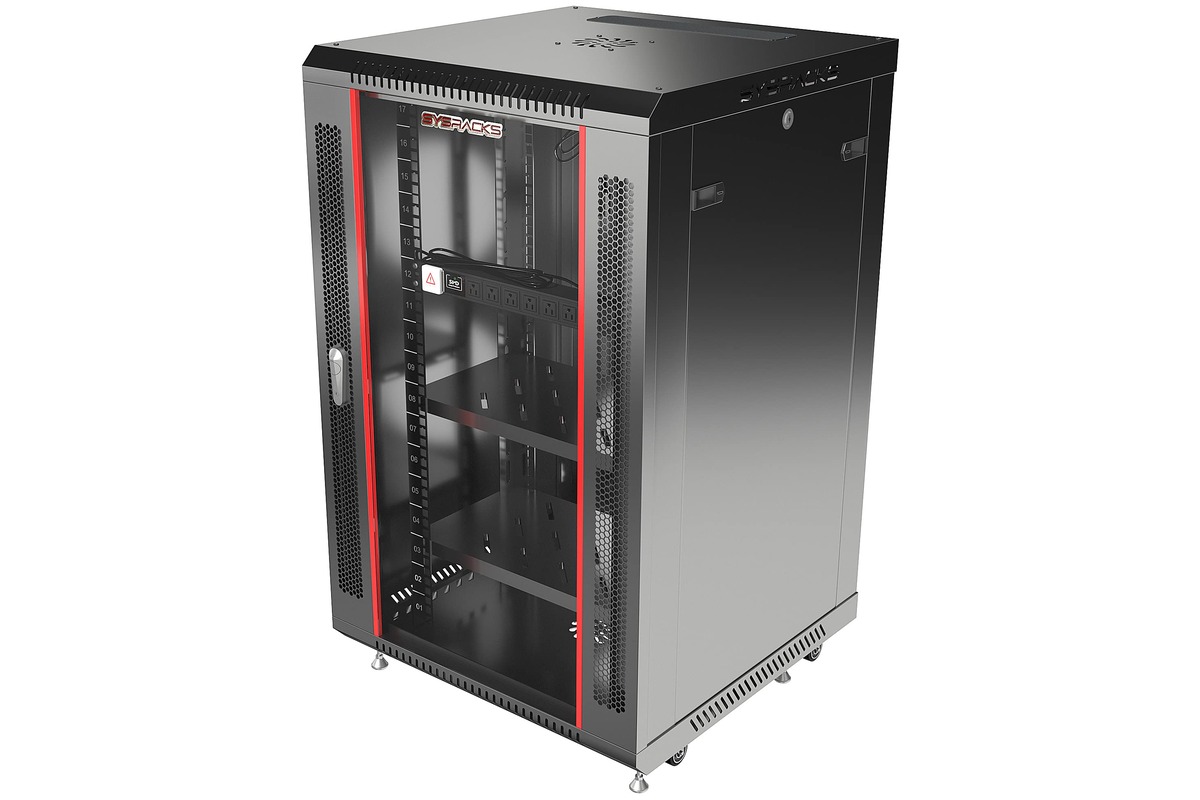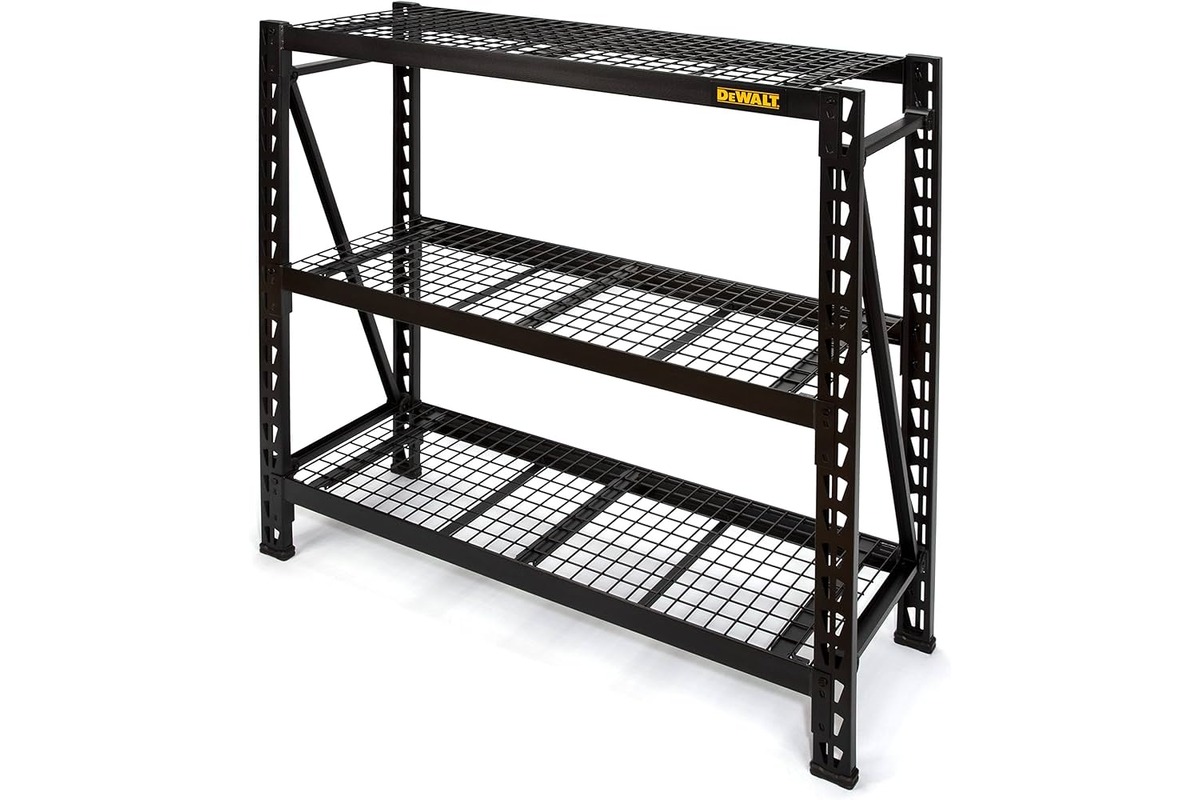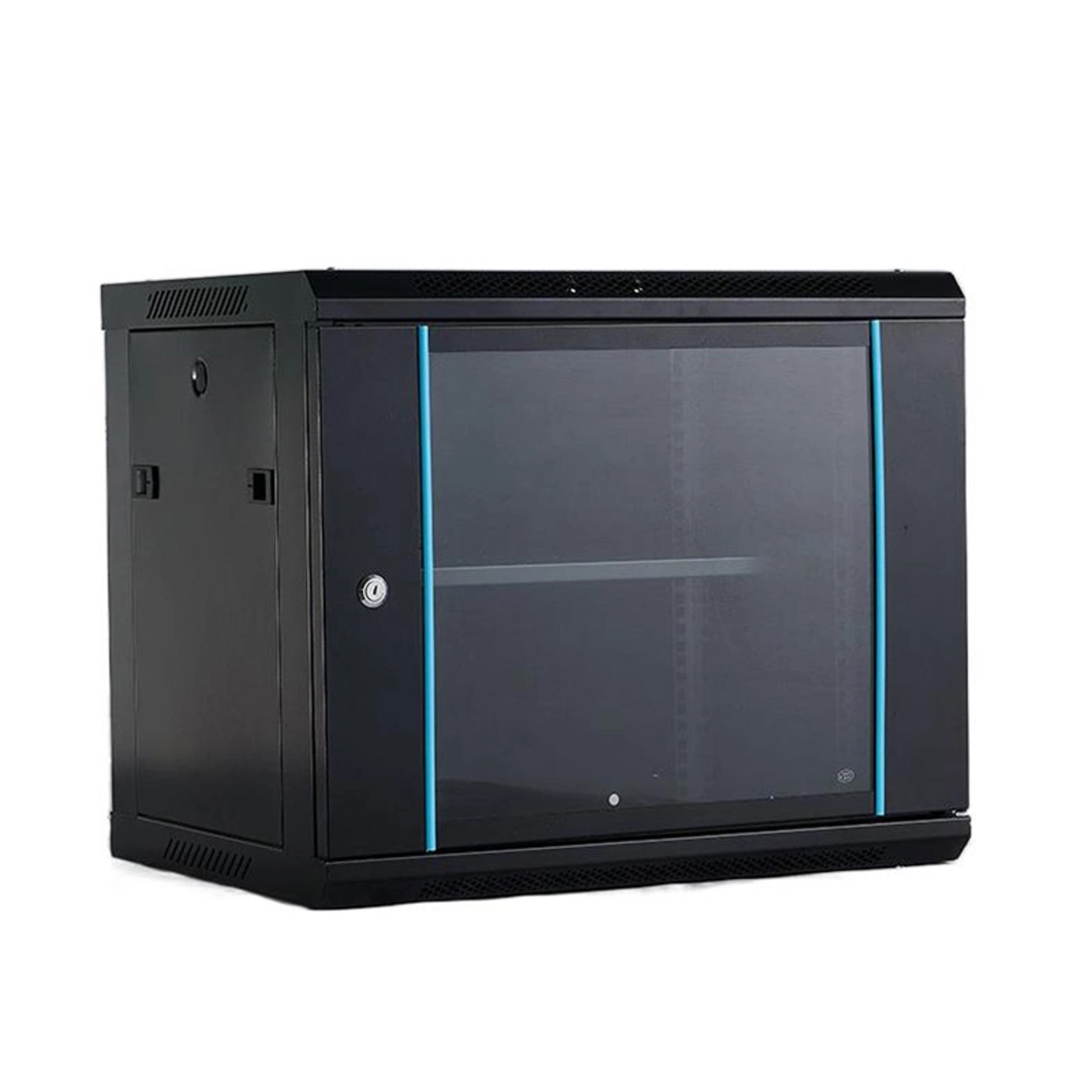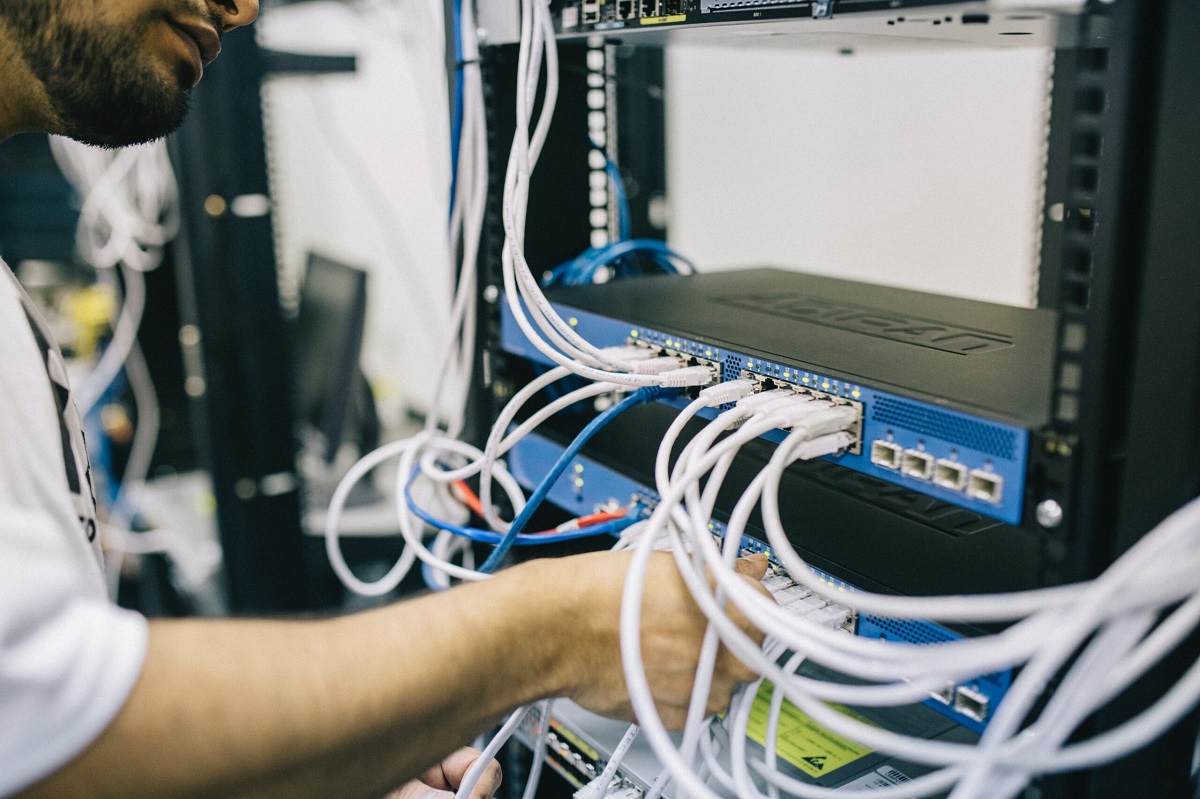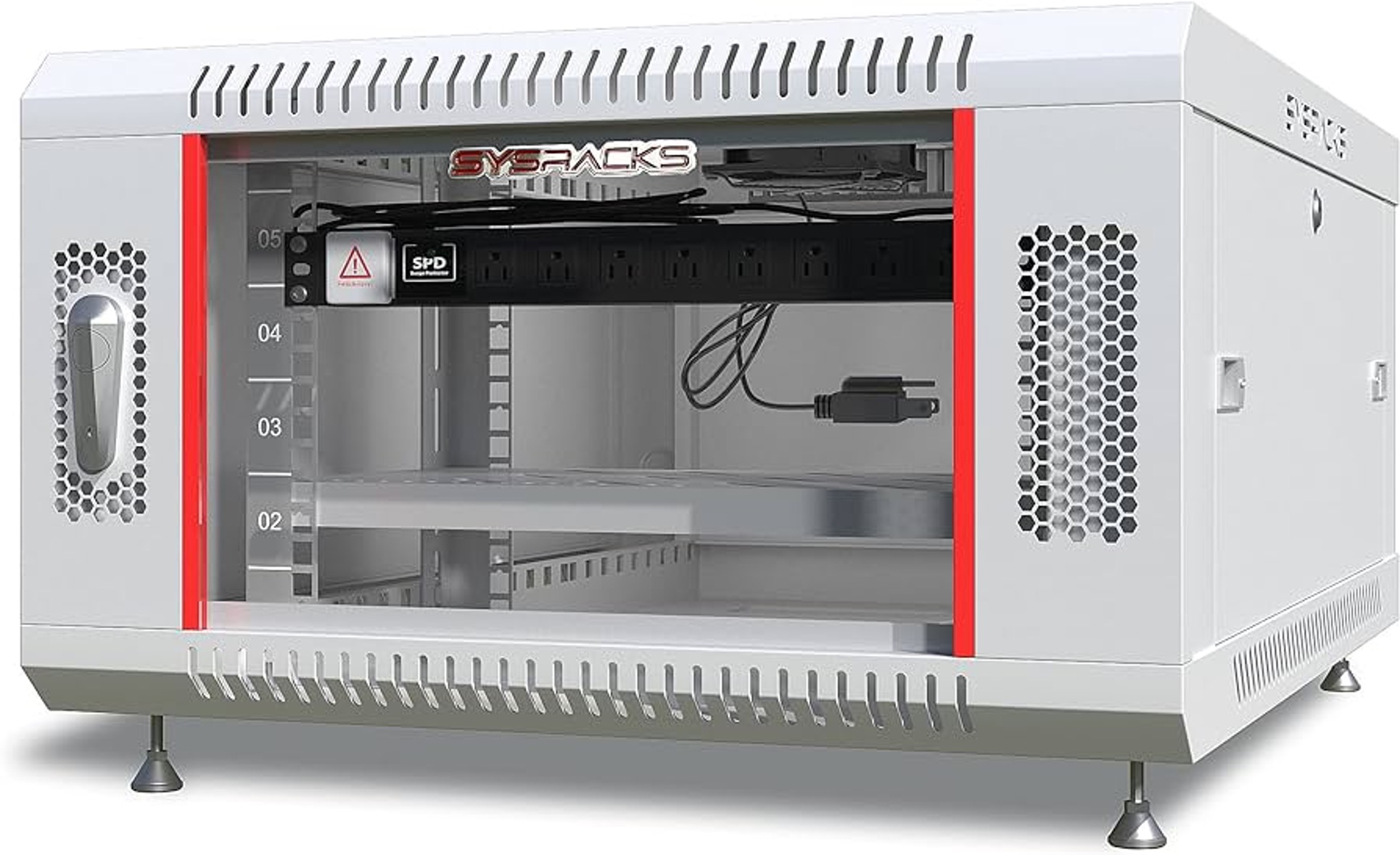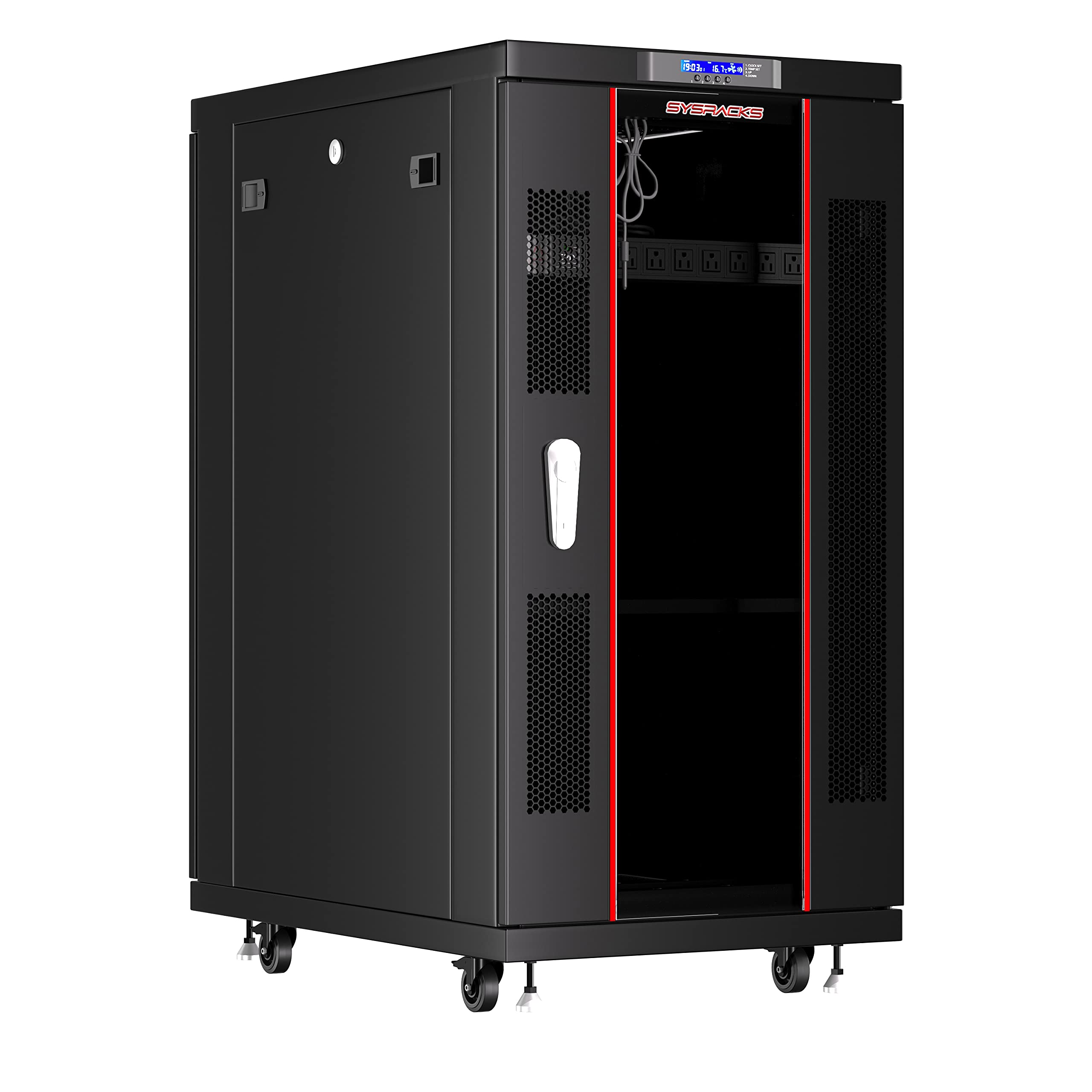Introduction
A server rack is a crucial component in any IT infrastructure. It houses valuable hardware and sensitive data, making it essential to secure and protect it from unauthorized access. One of the most effective ways to ensure the security of a server rack is by implementing proper locking mechanisms.
Locking a server rack provides a layer of physical security and prevents unauthorized individuals from tampering with or stealing the equipment inside. It also safeguards against accidental disconnections or disruptions to network connectivity. However, choosing the right lock and understanding the correct locking procedure are key considerations for any IT professional.
In this article, we will explore the various types of server rack locks available and provide a step-by-step guide on how to properly lock a server rack. We will also discuss additional security measures you can implement to enhance the protection of your valuable hardware.
Whether you are a small business with a single server rack or a large enterprise with a data center full of racks, the information presented here will help you make informed decisions about securing your infrastructure and maintaining the integrity of your data.
Now, let’s delve into the key considerations you should keep in mind before locking your server rack.
Key Considerations Before Locking a Server Rack
Before implementing a lock on your server rack, there are several important factors to consider. These considerations will help you choose the most suitable lock and ensure the security and accessibility of your equipment.
1. Rack Accessibility: Assess the level of accessibility required for your server rack. Consider who needs access and the frequency of access. Will it be limited to authorized personnel only, or will there be a need for regular access by multiple individuals?
2. Lock Type: Understand the different types of server rack locks available such as key locks, combination locks, and electronic locks. Each lock type has its own benefits and considerations. Be sure to choose a lock that aligns with your security requirements and operational convenience.
3. Physical Environment: Evaluate the physical location and environment surrounding your server rack. Is it in a controlled and secure area, or is it exposed to the risk of theft or unauthorized access? The level of security required will depend on the environmental factors.
4. Compliance Regulations: Consider any compliance regulations or industry standards that you need to adhere to. Certain industries, such as healthcare or finance, may have specific requirements for securing sensitive data. Ensure that your chosen lock meets these compliance standards.
5. Equipment Ventilation: Verify that the locking mechanism does not obstruct the airflow or ventilation of the server rack. Proper ventilation is crucial for maintaining optimal operating temperatures and preventing overheating of your equipment.
6. Accessibility Management: Establish an access management system to control and track who has access to the server rack. This can include issuing unique access credentials, maintaining an access log, or implementing a centralized access control system.
By carefully considering these aspects, you can make an informed decision regarding the type of lock to use and ensure the security and accessibility of your server rack. Now, let’s explore the different types of server rack locks available and how to choose the right one for your needs.
Different Types of Server Rack Locks
When it comes to locking a server rack, there are several options available, each with its own advantages and considerations. Let’s take a look at some of the most common types of server rack locks:
1. Key Locks: Key locks are the traditional and most common type of server rack lock. They require a physical key to unlock and provide a simple and reliable form of security. However, managing multiple keys and ensuring their safekeeping can be a challenge, especially in larger data centers.
2. Combination Locks: Combination locks offer a keyless solution, where a numeric code needs to be entered to unlock the server rack. This eliminates the need for physical keys and provides an additional layer of convenience. However, it’s important to regularly update and securely store the combination code to prevent unauthorized access.
3. Electronic Locks: Electronic locks are gaining popularity in server rack security. These locks use electronic mechanisms, such as keypad or card access systems, to control access to the server rack. They provide the advantages of keyless entry, easy access management, and audit trails for tracking who accessed the rack and when. However, they may require additional power sources and maintenance as compared to traditional key or combination locks.
4. Biometric Locks: Biometric locks use unique physical traits, such as fingerprints or iris scans, to grant access to the server rack. These locks offer a high level of security by ensuring only authorized personnel can gain entry. Biometric locks are often used in high-security environments, but they can be more expensive and require calibration and maintenance.
5. Remote Locking Systems: Remote locking systems enable server rack locks to be controlled and monitored remotely. These systems usually incorporate electronic locks enabled by network connectivity, allowing administrators to lock or unlock the rack from a central management system. Remote locking systems provide flexibility and convenience, especially in large data center environments.
When choosing a server rack lock, consider factors such as the level of security required, ease of access management, compatibility with existing infrastructure, and budgetary constraints. It’s also important to ensure that the chosen lock is compatible with the design and dimensions of your server rack.
Now that we have explored the different types of server rack locks available, let’s move on to the next section and learn how to choose the right lock for your server rack.
Choosing the Right Lock for Your Server Rack
Choosing the right lock for your server rack is essential to ensure the security and accessibility of your valuable equipment. Here are some factors to consider when selecting a lock:
1. Security Level: Assess the level of security you require for your server rack. Consider the sensitivity of the data and equipment housed within the rack. For high-security environments, biometric or electronic locks may be more appropriate, while standard key locks may suffice for less sensitive areas.
2. Access Management: Evaluate how you will manage access to the server rack. Consider if you need to grant different levels of access to different individuals or if a single lock code or key will be sufficient. Electronic locks offer more advanced access management features, such as individualized access codes or card-based systems.
3. Compatibility: Ensure that the chosen lock is compatible with your server rack’s design and specifications. Measure the dimensions of your rack and consider any specific installation requirements. Some racks may have built-in lock compatibility, while others may require additional hardware or modifications for the lock to fit properly.
4. Budget: Set a budget for your server rack lock. Consider the overall cost of the lock system, including the lock itself, any necessary accessories or installation fees, and ongoing maintenance expenses. Balance the security features you need with the budgetary constraints you have.
5. Usability: Evaluate the ease of use of the lock system. Consider factors such as how quickly authorized personnel can unlock the rack, how easily the lock can be maintained and serviced, and if there are any additional user-friendly features, like illuminated keypads or audible feedback.
6. Future Expansion: Consider your future needs for server rack security. If you anticipate expanding your IT infrastructure, ensure that the chosen lock system can scale accordingly. Look for locks that offer compatibility with future racks or the ability to integrate with broader access control systems.
Taking these factors into account will help you select the lock system that best fits your organization’s security requirements, budget, and operational needs. It’s important to thoroughly research different lock options, consult with IT professionals or security experts, and consider any industry-specific regulations or compliance standards.
Now that you understand how to choose the right lock for your server rack, let’s move on to the next section and learn the step-by-step process of how to lock a server rack correctly.
Step-by-Step Guide on How to Lock a Server Rack
Locking a server rack involves a straightforward process that ensures the security and protection of your valuable equipment. Follow these steps to correctly lock your server rack:
1. Choose the appropriate lock: Select the lock type that best suits your security requirements and operational needs. Refer to the previous section on “Choosing the Right Lock for Your Server Rack” for guidance.
2. Prepare the server rack: Ensure that the server rack is organized and all cables and equipment are properly installed and secured. This will prevent any potential obstructions or damage during the locking process.
3. Position the lock: Determine the best location to install the lock on your server rack. This is typically on the front door or side panel, where the lock mechanism can secure the access points.
4. Install the lock: Follow the manufacturer’s instructions to install the chosen lock securely. This may involve attaching brackets, aligning the lock mechanism, or simply inserting the lock into the designated slot provided on the server rack.
5. Test the lock: Once the lock is installed, test it to ensure it is functioning correctly. Verify that the lock engages properly and that it cannot be easily bypassed or tampered with.
6. Create access controls: Establish a system to manage access to the server rack. This can include assigning unique keys or combination codes, implementing card-based access systems, or integrating the lock with a central access control system.
7. Educate authorized personnel: Train authorized personnel on the proper use of the lock and emphasize the importance of security protocols. Make sure they understand how to secure and unlock the rack, as well as how to report any suspicious activity or concerns.
8. Maintain the lock: Regularly inspect and maintain the lock to ensure functionality. Perform routine checks to confirm that the lock is securely attached and operating as intended. Lubricate the lock if necessary to prevent any friction or sticking.
By following these step-by-step instructions, you can properly lock your server rack, mitigating the risk of unauthorized access and protecting your valuable equipment. Remember, maintaining the security of your server rack is an ongoing process, so regularly review and update security measures as needed.
In the next section, we will discuss additional security measures you can implement to enhance the protection of your server rack.
Additional Security Measures for Your Server Rack
While locking your server rack is an important step towards securing your valuable equipment, there are additional security measures you can implement to enhance the overall protection. Consider the following measures to further safeguard your server rack:
1. Surveillance Systems: Install CCTV cameras or video surveillance systems to monitor the area where the server rack is located. This provides visual evidence of any unauthorized access attempts and acts as a deterrent against potential intruders.
2. Access Control Systems: Implement an access control system that requires authorized personnel to provide identification credentials, such as biometric data or RFID cards, to gain access to the server room or server rack area. This provides an additional layer of security by limiting access to authorized individuals only.
3. Auditing and Logging: Implement a system that logs and audits all access attempts to the server rack. This includes recording who accessed the rack, when they accessed it, and for how long. Regularly review the logs to identify any suspicious activities or potential security breaches.
4. Environmental Monitoring: Deploy environmental monitoring systems to detect and alert you of any abnormal changes in temperature, humidity, or moisture levels within the server rack or server room. This helps prevent potential hardware failures or damage caused by unfavorable environmental conditions.
5. Fire Suppression Systems: Install fire suppression systems, such as automated sprinklers or fire extinguishers, within the server room to protect against the risk of fire. Ensure that these systems are regularly maintained and tested to ensure their effectiveness.
6. Security Awareness Training: Provide thorough security awareness training to all personnel who have access to the server rack. Educate them on best practices for physical security, password management, and recognizing and reporting suspicious activities.
7. Regular Security Assessments: Conduct regular security assessments of your server rack and infrastructure. This includes vulnerability scanning, penetration testing, and ensuring that security protocols and procedures are up to date. Address any identified vulnerabilities promptly to maintain a robust security posture.
By implementing these additional security measures, you can further enhance the protection of your server rack and mitigate the risk of unauthorized access or security breaches. It is important to regularly review and update your security strategies to adapt to evolving threats and ensure the continued integrity of your valuable data and equipment.
In the next section, we will discuss best practices for maintaining locked server racks.
Best Practices for Maintaining Locked Server Racks
Proper maintenance of locked server racks is crucial for ensuring the long-term security and functionality of your equipment. Follow these best practices to effectively maintain your locked server racks:
1. Regular Inspections: Conduct routine inspections of the server rack and lock to identify any signs of damage, wear, or tampering. Look for any loose components or irregularities that may compromise the effectiveness of the lock system.
2. Keep Keys and Access Codes Secure: Safeguard the keys and access codes associated with the server rack lock. Store them securely and limit access to authorized personnel only. Regularly update access codes or change locks if keys are lost or compromised.
3. Update Access Permissions: Regularly review and update access permissions for the server rack. Remove access for individuals who no longer require it and grant access to new authorized personnel. This helps maintain an accurate and up-to-date access control system.
4. Maintain Documentation: Keep detailed records of all activities related to the server rack, including maintenance tasks, access control changes, and security incidents. This documentation helps track any changes and provides a reference for future audits or investigations.
5. Perform Security Audits: Conduct periodic security audits to evaluate the overall security measures in place and identify any vulnerabilities. This includes testing the effectiveness of the lock system, auditing access logs, and reviewing surveillance footage.
6. Train Personnel: Continuously educate authorized personnel on security protocols and best practices for maintaining locked server racks. Emphasize the importance of physical security, proper use of keys or access codes, and reporting any suspicious activities.
7. Backup Data Regularly: Implement regular data backup procedures to ensure that critical information stored in the server rack is protected. This includes both onsite and offsite backups to mitigate the risk of data loss due to hardware failures, theft, or natural disasters.
8. Stay Updated on Security Technologies: Stay informed about the latest advancements in server rack security technologies. Regularly assess the effectiveness of your current lock system and consider upgrading to more advanced options that offer enhanced security features.
By following these best practices, you can maintain the integrity and security of your locked server racks. Regular maintenance and vigilance are essential to ensure that your valuable equipment remains protected from unauthorized access or potential security breaches.
Now that we have discussed best practices for maintaining locked server racks, let’s conclude this article, summarizing the key takeaways mentioned throughout.
Conclusion
Securing server racks is a critical aspect of safeguarding valuable equipment and sensitive data. By implementing proper locking mechanisms, you can enhance the physical security and prevent unauthorized access. Before locking a server rack, it’s important to consider factors such as accessibility, lock type, physical environment, compliance regulations, equipment ventilation, and accessibility management.
There are various types of server rack locks available, including key locks, combination locks, electronic locks, biometric locks, and remote locking systems. Choosing the right lock depends on the desired security level, access management requirements, compatibility with the server rack, and budgetary considerations.
To properly lock a server rack, follow a step-by-step guide that involves choosing the appropriate lock, preparing the rack, positioning and installing the lock, testing its functionality, creating access controls, educating authorized personnel, and regularly maintaining the lock.
In addition to locking the server rack, implementing additional security measures is recommended. These measures include surveillance systems, access control systems, auditing and logging, environmental monitoring, fire suppression systems, security awareness training, and regular security assessments.
By adhering to best practices such as regular inspections, secure storage of keys and access codes, access permission updates, documentation maintenance, security audits, personnel training, regular data backups, and staying updated on security technologies, you can ensure the longevity and effectiveness of your locked server racks.
Securing server racks is an ongoing process, and it requires a combination of physical security measures, access controls, and a vigilant approach to maintenance and monitoring. By implementing these practices, you can minimize the risk of unauthorized access, protect your equipment, and maintain the integrity of your data and infrastructure.
Remember to assess your specific security requirements, consult with industry experts if necessary, and stay informed about emerging threats and advancements in server rack security technologies. By prioritizing the security of your server racks, you are taking a proactive step towards safeguarding your organization’s critical assets.







